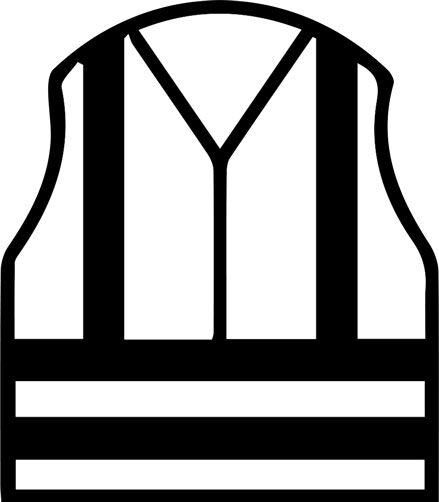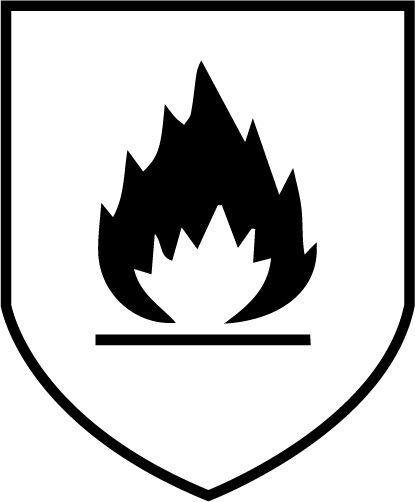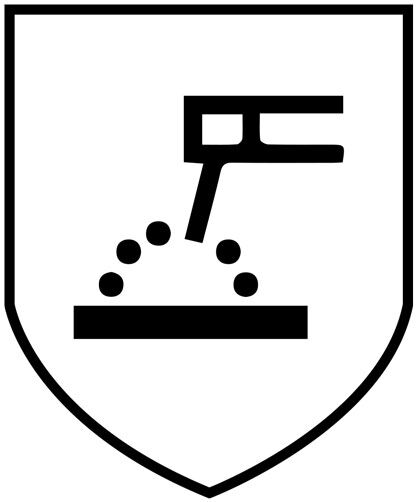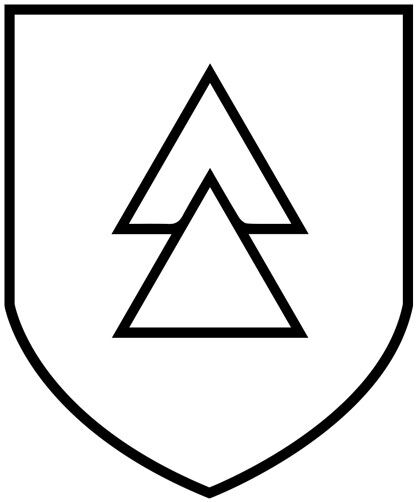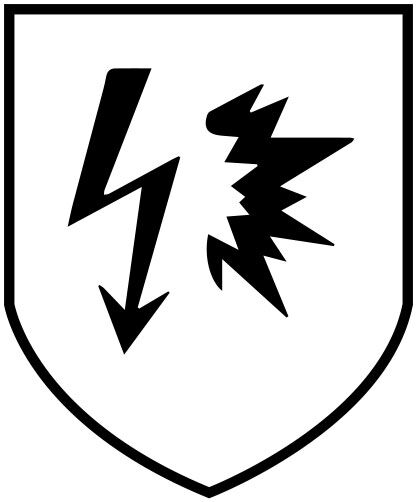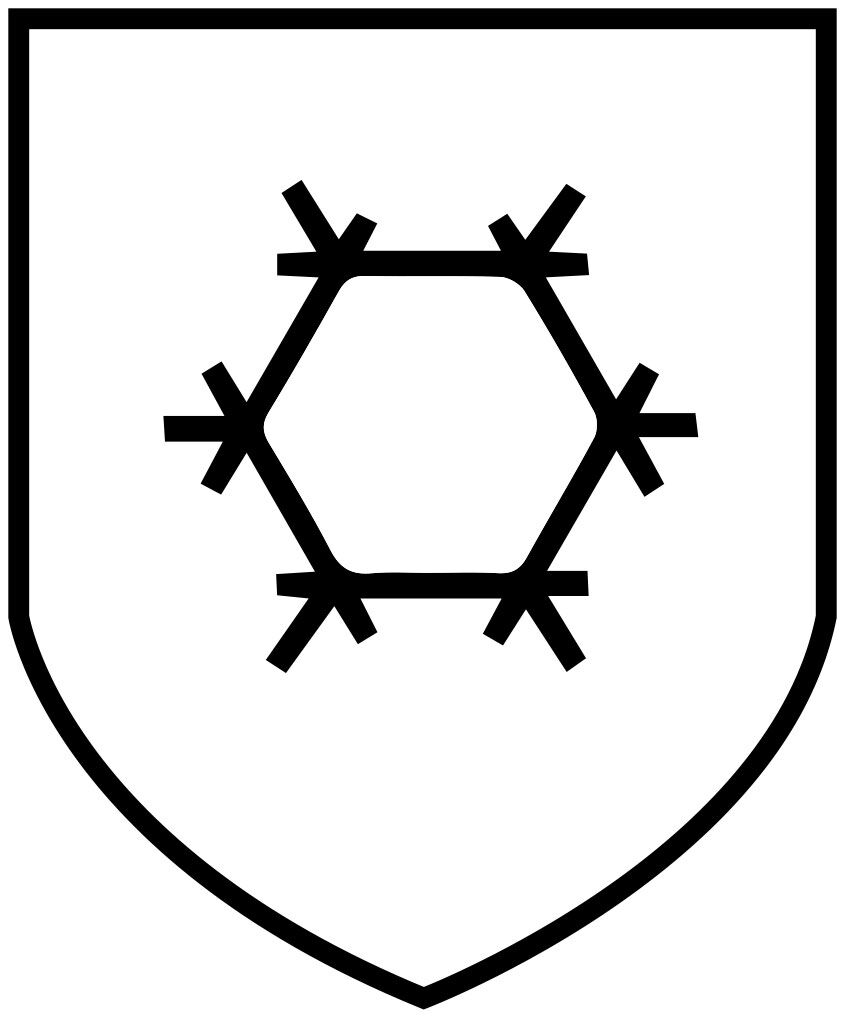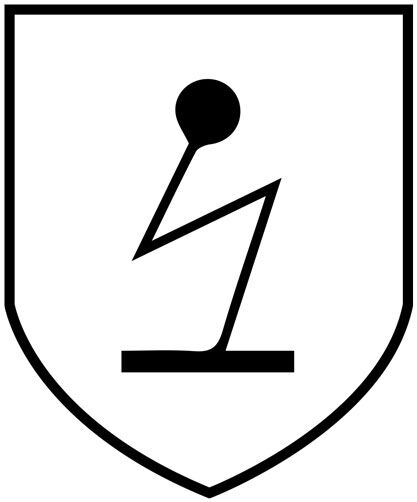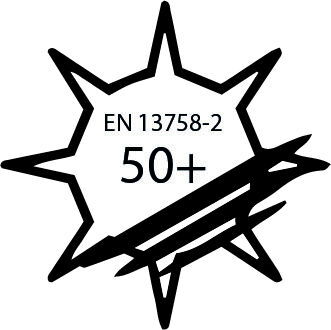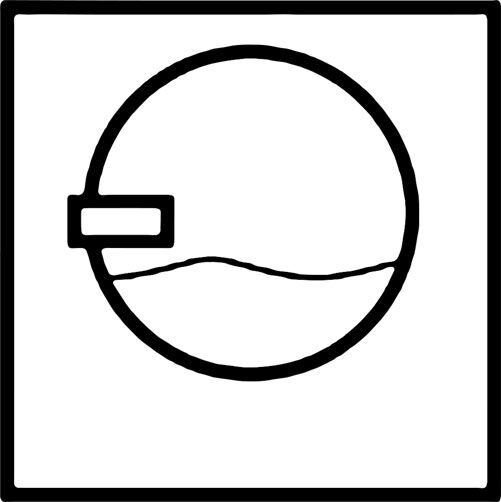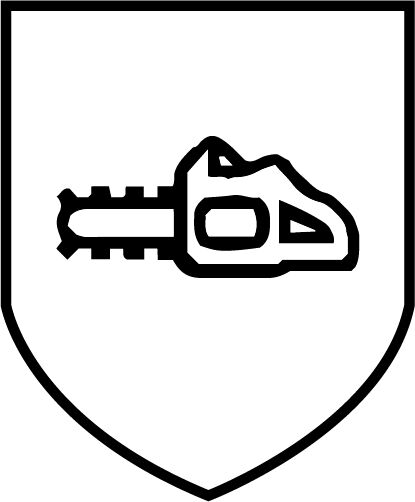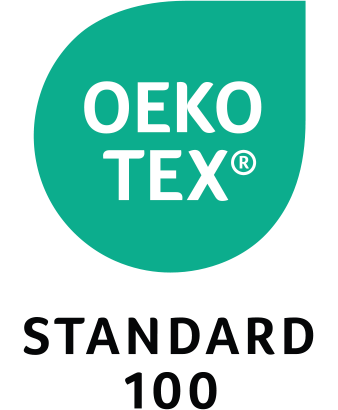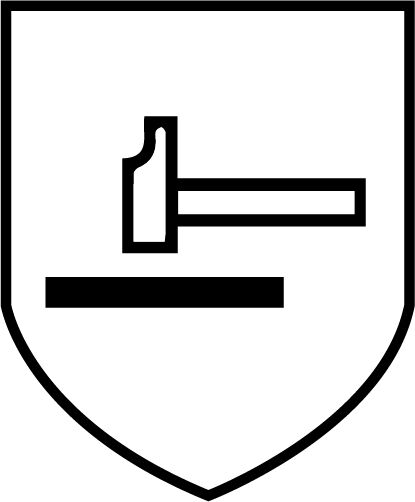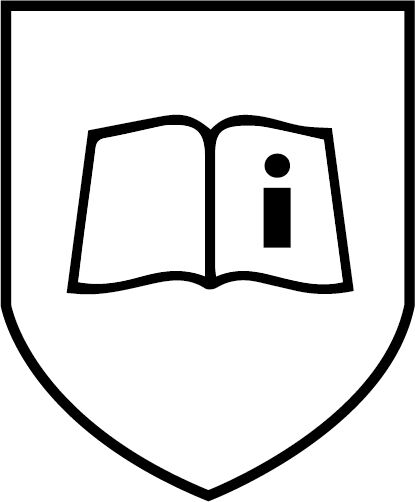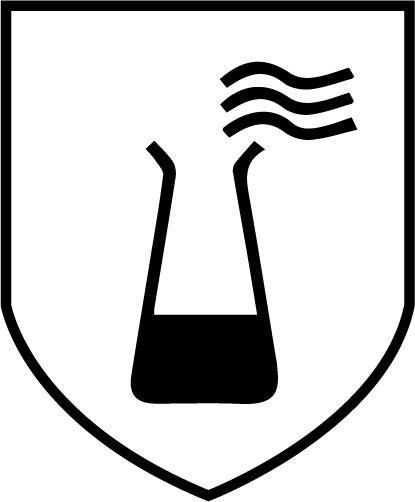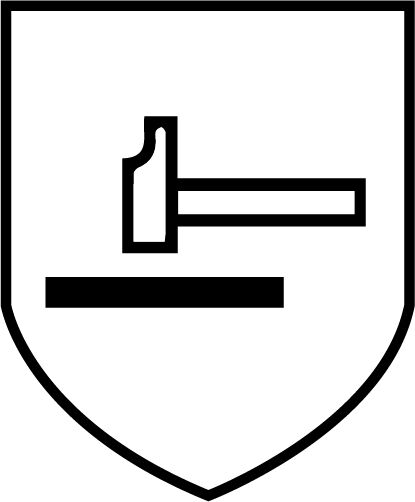EN and ISO standards explained
Do you know if your workwear meets the safety requirements? Navigating the international and european standards for workwear and accessories can be challenging. However, you must ensure that your workwear meets the current safety standards for your workplace; otherwise, you might face costly fines. To help you, we've created a list of the most important certifications. Remember that safety should always come first, so it is crucial to select the proper equipment for the task.
EN ISO 20471 (ex EN 471) - High visibility clothing
EN ISO 20471 is the international standard for high visibility clothing (also known as reflective clothing or hi-vis workwear). EN 20471 requires both fluorescent color for daytime visibility and reflective elements for visibility in the dark. This certification is required for work in high-risk areas such as traffic, construction sites, and generally near motorized vehicles and machinery like cranes and excavators. The EN ISO 20471 standard is divided into three classes based on the amount of fluorescent fabric and reflective material.
- EN ISO 20471-1: A minimum of 0.14 m² of fluorescent material and a minimum of 0.10 m² of reflective material
- EN ISO 20471-2: A minimum of 0.50 m² of fluorescent material and a minimum of 0.13 m² of reflective material
- EN ISO 20471-3: A minimum of 0.80 m² of fluorescent material and a minimum of 0.20 m² of reflective material
You can achieve class 3 workwear in different ways. One option is to use a product that meets the requirements for EN ISO 20471-3, or you can combine two products from EN ISO 20471 class 2 to reach the class 3 certification.
See the combination options in the chart below:
|
EN ISO 20471 |
Class 3 |
Class 2 |
Class 1 |
|
Class 2 |
Total class 3 |
Total class 3 |
Total class 2 |
|
Class 1 |
Total class 3 |
Total class 2 |
Total class 1 |
EN ISO 11612 (ex EN 531) - Flame retardant workwear
EN ISO 11612 certified workwear protects the user against short-term contact with high heat, flames, and sparks. Protective clothing certified in accordance with EN ISO 11612 is suitable for electricians and industrial workers who operate in areas with a risk of exposure to fire, sparks, or high heat. However, the EN ISO 11612 standard is not intended for firefighters and welders, who are exposed to prolonged heat, sparks, and flames.
Please note that EN ISO 11612 is only applicable to clothing and flame-resistant undergarments. To achieve full protection, the face, hands, and feet should be shielded with other approved garments. Flame-resistant clothing should always be used in combination with other clothing that meets EN ISO 11612 standards. If the clothing is in direct contact with the skin, it doesn't eliminate all risks of burns. EN ISO 11612 is divided into various code letters that indicate the garment's level of protection. These are detailed in the table below.
| A1, A2 | Requirements for limited flame spread, A1: Surface ignition A2: Edge ignition |
| B (1-3) | Protection against convective heat and open flames |
| C (1-4) | Protection against radiant heat |
| D (1-3) | Protection against molten aluminium splash |
| E (1-3) | Protection against molten iron splash |
| F (1-3) | Protection against contact heat |
EN ISO 11611 (ex EN 470-1) - Workwear for welding
EN ISO 11611 is the welding version of the above-mentioned EN ISO 11612. This standard specifies the requirements for materials and design for welding clothing. For example, all external pockets must be secured and covered with flaps to prevent sparks from burning into the fabric.
Workwear that is certified in accordance with EN ISO 11611 protects against welding sparks, radiant heat, and short-term exposure to flames. It also minimizes the risk of electric shock from brief contact with electrical conductors. Therefore, EN ISO 11611 clothing is suitable for welders, railway workers, foundry workers, and similar professions.
Note that the ability to insulate against electricity decreases when your workwear becomes wet, sweaty, or dirty. If the clothing is contaminated with flammable substances, the flame protection is compromised. Thus, dirty clothing does not meet safety requirements. Protective clothing should not be washed with soap-based detergents, as this can leave limescale marks on the fabric, which will burn under high heat exposure.
The EN ISO 11611 standard is divided into two classes based on welding technique and scenario. Clothing in EN ISO 11611 class 2 provides greater protection against splashes and radiant heat.
|
EN ISO 11611 |
Criteria | Welding techniques | Circumstances |
| Class 1 (EN ISO 11611-1) |
The material must endure at least 15 drops of molten metal without the temperature on its reverse side increasing by more than 40°C. |
Manual welding with light formation of splashes and droplets, including:
|
Operation of machinery, including:
|
| Class 2 (EN ISO 11611-2) |
The material must endure at least 25 drops of molten metal without the temperature on its reverse side increasing by more than 40°C. |
Manual welding with intense formation of splashes and droplets, including:
|
Operation of machines or methods, including:
|
EN ISO 14116 (ex EN 533) - Limited flame spread
EN ISO 14116 is used for clothing and accessories with a lower level of flame-resistant properties, such as high-visibility vests, rainwear, or kneepads. The standard is divided into three different indexes, with index 3 providing the highest level of protection.
Requirements for EN ISO 14116 Index 1:
a) The fire must not spread to the edge of the material.
b) There must be no lingering glow after the flame exposure has stopped.
c) The material must not release burning or molten debris.
d) Hole formation is allowed.
Requirements for EN ISO 14116 Index 2:
a) The fire must not spread to the edge of the material.
b) The glow time must not exceed 2 seconds.
c) The material must not release burning or molten debris.
d) Hole formation is not allowed.
Requirements for EN ISO 14116 Index 3:
a) The fire must not spread to the edge of the material.
b) The glow time must not exceed 2 seconds.
c) The material must not release burning or molten debris.
d) Hole formation is not allowed.
e) The afterflame time must not exceed 2 seconds.
Protective clothing classified as EN ISO 14116 index 1 should not be worn directly on the skin. These can only be worn over clothing classified as index 2 or 3.
Please note that dirt, including grease, oil, and liquid chemicals, affects the protective ability of the workwear. To maintain its protective effect, it should be washed regularly.
EN 13034 - Protection against liquid chemicals
Clothing certified in accordance with EN 13034 provides limited protection against splashes of liquid chemicals. The standard is aimed at situations where the user can relatively quickly exit the hazardous area and remove the clothing. EN 13034 workwear is suitable, for example, for drivers transporting tankers filled with gasoline or service technicians who occasionally handle acids, lubricants, etc. In environments with a higher risk of contact with liquid chemicals, more protective clothing should be used.
If you are exposed to chemicals, the clothing should be removed immediately and either washed or discarded.
IEC 61482-2
Workwear that meets the requirements of IEC 61482-2 protects users from the thermal risks of an electric arc. During an arc flash, flames, radiation, and metal spray from electrodes may occur, making it critical to wear protective clothing. IEC 61482-2 workwear is part of risk category III, meaning it's designed for use in high-risk areas.
Clothing with the IEC 61482-2 certification is developed to prevent second-degree burns from arc flash exposure. Note that the standard does not cover protection against other risks associated with arc flash incidents, such as metal shrapnel, pressure waves, electric shocks, or harmful gases.
To achieve optimal protection against electric arcs, all clothing items must be certified under IEC 61482-2 (including underwear, socks, gloves, etc.), and the clothing must cover the entire body. In addition to clothing, additional safety gear such as helmets with face shields and safety footwear should be used. Layering IEC 61482-2-certified workwear is an effective way to protect yourself.
In 2019, IEC 61482-2 was revised, introducing a new pictogram and a new value called ELIM. The updated standard now includes two test methods with different risk levels:
IEC 61482-1-1 - Open Arc test
Involves a medium-voltage range (>1000 V)
In this test, materials are exposed to an open arc (a real-world simulation where the arc is not 'controlled'). The result for each material or material combination is indicated in calories per square centimeter (cal/cm²).
The ELIM value (Incident Energy Limit) is the maximum threshold of thermal energy a material can withstand before the user risks second-degree burns or the material develops holes.
The ATPV value (Arc Thermal Performance Value) indicates the amount of energy a material can be exposed to while still providing a 50% protection rate for the user.
The EBT50 value (Energy Break Open Threshold) indicates the amount of energy a material can endure before there's a 50% chance of hole formation in the material.
IEC 61482-1-2 - Box test (directional arc)
Involves a low-voltage area (400 V)
The material is tested with an arc that is directed. The arc is 400 V and lasts for 500 ms. The test is divided into two different classes, and after completing the test, the result is evaluated as either passing or passing with regard to the classes. To pass class 2 in the box test, it generally requires a combination of protective clothing or fleece lined clothing.
EN 342 - Cold
EN 342 is the European standard for cold protective clothing. Cold is defined as a combination of humidity and wind with an air temperature of -5°C or lower. In strong winds, you may need more thermal insulation even if the temperature remains the same.
Keep in mind that the insulation capacity is significantly reduced if the clothing is wet or damp. The properties may also degrade after use, storage, and washing. To achieve optimal protection against cold, the garments should be properly fastened and tightened around openings, such as wrists or ankles.
EN 343 - Rain
Clothing with the EN 343 certification provides protection against snow, rain, and humid weather. EN 343 is divided into classes 1-4 for both waterproofness and breathability, with class 4 being the highest level. Note that workwear should be properly fastened to ensure optimal protection, and that clothing with this certification is not suitable for work environments with a risk of fire, flames, or sparks.
EN 1149 3/5 - Electrostatic properties
The standards EN 1149-3 and EN 1149-5 protect the user from electrostatic discharges and reduce the risk of spark formation. Clothing with these certifications is suitable for work involving explosion risks or handling flammable substances. Potentially explosive environments are known as ATEX. Examples include the petrochemical industry, forestry, gas stations, and energy companies dealing with solid fuels, fuel oil, or natural gas.
Ensure that the user has proper grounding with suitable footwear (EN ISO 20345) and that the clothing stays in place during movement, such as when kneeling or reaching.
Antistatic protective clothing should be worn as part of a complete grounded system to avoid electrical charges. To be fully protected, all materials that do not meet the requirements must be covered with EN 1149 3/5-certified clothing. This also applies to conductive parts like zippers or similar items.
EN 1149-3:2004 specifies workwear tested for its ability to dissipate electrostatic charges from the material's surface.
EN 1149-5:2008 specifies performance and design requirements for protective clothing. Note that these requirements may be insufficient in oxygen-enriched, flammable environments. The standard does not include protection against mains voltages.
EN 13758-2 - Workwear with UV protection
EN 13758-2 defines clothing that protects against the UVA and UVB rays from the sun. Outdoor workers are at high risk of being exposed to significant levels of UV radiation, which can cause skin damage. The risk of skin damage can be reduced by wearing workwear certified in accordance with EN 13758-2. Note that only the skin covered by the clothing is protected.
EN ISO 15797 - Industrial washing
The standard EN ISO 15797 specifies workwear that is suitable for industrial washing and drying. Clothing with this certification can be washed at a maximum of 85°C, depending on the material.
EN 381-5 - Workwear for work with chainsaws
EN 381-5 is the standard for clothing designed to guard against chainsaw cuts. Workwear with this certification mainly includes cut-resistant trousers and protective bib overalls. EN 381-5-certified workwear is suitable for forestry workers and others operating a chainsaw.
EN 381-5 is divided into three different classes based on chain speed:
- Class 1 provides protection at a chain speed of 20 m/s
- Class 2 provides protection at a chain speed of 24 m/s
- Class 3 provides protection at a chain speed of 28 m/s
To ensure optimal protection, the cut-resistant protection of the trousers should overlap with your safety footwear.
Oeko-tex® Standard 100 - Tested for harmful substances
Oeko-Tex® Standard 100 applies to textile products that are free from harmful chemicals. The certification imposes strict requirements on all components of the product, including zippers, buttons, sewing threads, and similar elements. The closer the textile comes into contact with the skin, the stricter the requirements. Thus, Oeko-Tex® ensures that the user is not exposed to harmful substances.
EN 397 - Industrial safety helmets
The EN 397 certification specifies requirements for industrial safety helmets in terms of material, construction, and size. This ensures that the user is optimally protected against falling objects.
To be certified in accordance with EN 397, a helmet must provide impact absorption (vertical) and penetration resistance, as well as be flame-retardant. The chin strap must also release with a minimum of 150 N and a maximum of 250 N.
Note that safety helmets have an expiration date. After the expiration date, they are no longer certified.
EN 14404 - Knee protection
EN 14404 is the international standard for knee protection that is designed to prevent and reduce injuries that can occur in kneeling work.
The certification is divided into three levels:
- Level 0: Suitable for use on flat surfaces.
- Level 1: Suitable for use on flat or uneven surfaces.
- Level 2: Suitable for use on flat or uneven surfaces under severe conditions.
Knee pads with the EN 14404 certification are further divided into types:
- Type 1: Knee protection that is not integrated into clothing but is attached to the leg in other ways.
- Type 2: Foam knee pads or other cushioning that are permanently attached to trousers or can be attached using knee pad pockets.
- Type 3: Knee protection that is not attached to the leg.
- Type 4: Knee protection that is part of another product.
Knee pads must be replaced regularly. If one pad is worn out or damaged, both should be replaced. Knee pads should be removed from work trousers before washing and drying.
EN 420 - Gloves
The international standard EN 420 defines general requirements and test methods for all work and protective gloves. Note that damaged gloves do not provide optimal protection.
EN 374 - Chemicals (gloves)
Gloves certified in accordance with EN 374 protect the user from chemicals and microorganisms. The gloves are classified from A to L based on what they protect against:
A: Methanol
B: Acetone
C: Acetonitrile
D: Dichloromethane
E: Carbon disulfide
F: Toluene
G: Diethylamine
H: Tetrahydrofuran
I: Ethyl acetate
J: n-Heptane
K: Sodium hydroxide 40%
L: Sulfuric acid 96%
EN 374 is also divided into levels 1-6 depending on the degree of protection. This is determined by breakthrough time in minutes.
Level 1: Up to 10 minutes
Level 2: Up to 30 minutes
Level 3: Up to 60 minutes
Level 4: Up to 120 minutes
Level 5: Up to 240 minutes
Level 6: Up to 480 minutes
EN 388 - Mechanical risks (gloves)
EN 388 is the standard for gloves that protect the user against mechanical risks. The certification from 2003 was revised in 2016 with new requirements and a new test method for cut resistance, resulting in two versions of the standard. For both EN 388:2003 and EN 388:2016, the gloves are tested for the following properties and assigned an overall score. The higher the score, the better the protection.
| Test | Score |
| Abrasion resistance |
1-4 |
| Cut resistance (Coupe Test) |
1-5 |
| Tear strength |
1-4 |
| Puncture resistance |
1-4 |
The highest possible score for gloves certified in accordance with EN388:2003 is 4544.
EN 388:2016 tests gloves for additional cut resistance (the TDM test). The result is indicated by a letter from A to F, with F being the highest. Therefore, the highest possible score for a pair of protective gloves certified in accordance with EN388:2016 is 4544F.
If the safety gloves provide impact protection, this is indicated by the letter P. If a test has not been conducted, this is marked with the letter X.
EN 407 - Thermal risks (gloves)
Gloves with the EN 407 certification protect the user against thermal risks. Protective gloves certified in accordance with EN 407 are suitable for welding, annealing, and other tasks that involve high heat. The standard is divided into the following protection levels from A to F:
A: Fire
B: Contact heat
C: Convective heat
D: Radiant heat
E: Molten metal - small splashes
F: Molten metal - larger quantity
EN 511 - Cold (gloves)
EN 511 specifies requirements for cold-resistant gloves. To achieve certification, the gloves must be able to withstand both convective cold and contact cold (direct touch). Note that they are not necessarily tested for water penetration. The gloves must meet at least protection level 1 according to EN 388 (tests for abrasion resistance and tear resistance).
EN 1150 - Visible leisurewear
EN 1105 is the standard for high visibility clothing that is not intended for work. This applies, for example, to reflective clothing for running or cycling.
Do you need help?
If you have any questions regarding standards and certifications, please contact our customer service.
We will be happy to assist you!

